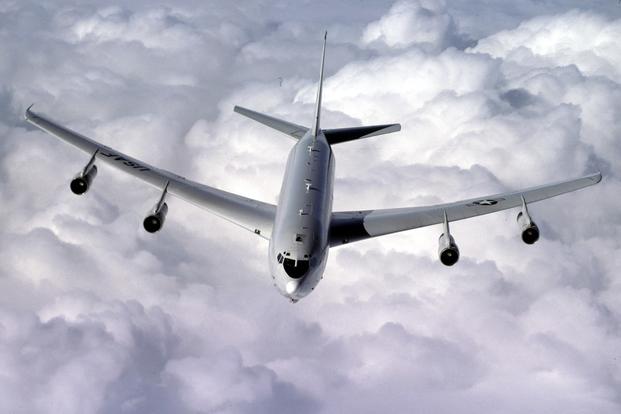U.S. Air Force Chief of Staff Gen. Mark Welsh said the replacement for the service's aging ground surveillance plane could begin testing as early as 2021 and be delivered ready for mission just two years later.
Welsh’s statement to Congress on Wednesday afternoon again tweaks the timeline on the successor to the E-8 Joint Surveillance Target Attack Radar System, or JSTARS, whose contract and delivery dates already have been changed numerous times.
“It’s in the budget, it’s funded all the way through IOC,” Welsh said, referring to the initial operational capability -- acquisition parlance for when the plane is supposed to be ready to conduct initial operations. “2024 is the delivery date but we’d like to pull it back to ’23 for IOC, which means we should be delivering airplanes into ’21 or ’22 at the latest” for testing.
Welsh designated the replacement aircraft an acquisition priority in 2013.
Air Force Secretary Deborah Lee James told lawmakers the start date for the program had changed for at least two or three reasons.
“The Air Force slowed it down at one point because I think it was the judgement of our service acquisitions executive and some others that the laydown and the strategy wasn’t quite ready,” she said.
James said there was also some debate within the Defense Department whether the mission could be done with an unmanned aircraft; and whether the system was an intelligence, surveillance, reconnaissance platform or a battlefield management aircraft.
She said that debate has been resolved -- its mission is to scan the ground for troop movement or other activity and help manage the battlefield -- and the Air Force is ready to push the program ahead as quickly as possible. “We’re very committed to the program. It’s an important part of our future,” she said.
The Air Force last August awarded contracts for a combined $31.4 million to Lockheed Martin Corp., Northrop Grumman Corp. and Boeing Co. to develop designs for the new plane.
The JSTARS now being flown, manufactured by Northrop Grumman, uses a 24-foot long radar capable of synthetic aperture radar that creates a rendering or “picture” of the terrain below, while a Ground Moving Target Indicator, or GMTI, detects moving objects.
The Air Force last August awarded contracts for a combined $31.4 million to Lockheed Martin, Northrop Grumman and Boeing to develop designs for the new plane, whose mission is to surveille the ground for troop movement or other activity.
The current STARS, a militarized Boeing 707, uses a 24-foot long radar capable of synthetic aperture radar that creates a rendering or “picture” of the terrain below, while a Ground Moving Target Indicator, or GMTI, detects moving objects.
James said the Air Force is now conducting technology maturation and risk reduction related to the plane. The purpose of this phase is to reduce the costs of technology, engineering, integration and life-cycle so that when it comes time to execute a contract for engineering and manufacturing development there is greater assurance the final program will be successful.
“Once that is done we’ll go into other parts of the program,” she said, “with the caveat that these ae development programs. Integration [of technology] can be a challenging aspect and you don’t know what you don’t know.”









